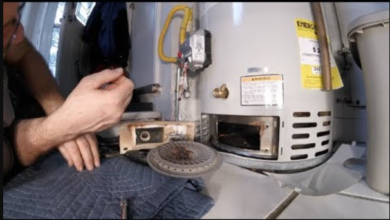Transmission Trouble Checklist: Important Signs Your Vehicle’s Gearbox Needs Repair

Have you ever received a bill for auto repair? I have, and it’s not very nice. When your automobile tries to change into gear one day, you detect a tiny vibration or hesitancy but ignore it, thinking it’s a “one-time” issue.
Similar to people, cars can occasionally produce strange noises and act strangely. They pause, tremble, shudder, or shutter. Who knows? Perhaps they aren’t as fond of chilly mornings or late-night hikes as we are.
We would spend a significant portion of our income on mechanic expenses and half of our lives in the repair shop if we whined about every minor quirk. Unfortunately, there is a point at which something that was once a “one-time” becomes a “once in a while” and eventually a “quite regular” occurrence. In other words, you can probably avoid going to the garage if the strange noise you heard on Monday morning disappears and doesn’t come back. But if it returns for a reprise, you should pay attention.
If you’re anything like me, waiting for the results of a blood test at the doctor’s office is what taking your car to be repaired feels like. You are mentally going over all the “worst-case scenarios” while your vehicle is being diagnosed. It seems you’re attempting to brace yourself for the terrifying terms “engine” or “transmission” in advance.
Contents
What Is Transmission?
Although an auto gearbox failure won’t necessarily destroy your automobile, it can be a significant repair. Usually, it results in a large expense and a lot of downtime. Your transmission is a truly magnificent piece of art.
So you might not want to mount it above your fireplace, but you have to admit, how all these gears, bearings, and oddly shaped components are assembled to make a system that moves your car from point A to point B is impressive.
I disagree with people saying that the transmission is the most crucial component of the vehicle after the engine. You can’t have one without the other; it is a team effort. Although they could be more helpful on their own.
They resemble your car’s brain and heart, and both parts collaborate. Thus, an issue with your gearbox may impact how well the engine runs. Furthermore, you might have to deal with more severe problems if you don’t address them.
Contrary to common misconception, auto gearbox failures don’t necessarily have to be scary. While they can be expensive adventures, the issue is often rather minor in many circumstances.
Like every mechanical, you can prevent more significant problems if you identify the issue early enough. However, you can’t always rely on mechanics to give you a straight answer. They are in the business of making money, after all.
Fixing transmissions usually requires a specialist because they are complex and sophisticated systems. You should learn how to recognize the most common signs of gearbox failure and rule out simple fixes before accepting an expensive car transmission repair.
Rebuilding or replacing may be necessary, but it’s essential to weigh all of your options beforehand. You never know; you could save hundreds of dollars with a little common sense.
Never forget to consider using CarHub car maintenance service if you require dependable auto repair. Their skilled specialists may offer professional diagnostic and repair services to maintain your car’s smooth and effective operation.
Sign Of Auto Transmission Failure
1. Slippage
This occurs when your car is not responding even when your motor is revving. It’s comparable to how your vehicle would react if your tires were stuck in the snow or slipping on ice.
Even if the engine is roaring and you press the gas pedal, it doesn’t appear like you are moving forward. Your car’s ability to go ahead is hampered by slippage, and if it gets severe enough, you can soon be unable to move at all.
2. Leaks
Make sure there are no leaks underneath your automobile by doing routine checks. The fluid in most automatic transmissions is red, so you should have your car looked out if you see a coloured puddle on the ground. You should look into it more if you see any puddles at all (apart from ones caused by your air conditioner).
3. Smells
A low fluid level might lead to overheating in your transmission. A burning smell could indicate that your transmission or transmission fluid is overheating. Inspect your fluid level and replenish it as needed. Investigating the reason the level was initially low can also be worthwhile.
4. Sounds
Transmission issues manifest as clunking, grinding, humming, buzzing, knocking, and whining. These noises may indicate low fluid levels but can also be caused by wear and tear.
5. Delayed Engagement or Lack of Response
There are moments when your transmission refuses to comply with your commands. Similar to your children, yes?
But unlike your kids, sometimes bribery or motherly nudges aren’t enough to get your car to act appropriately. There are several levels of delayed participation; occasionally, we risk procrastinating too long.
6. Rough Shifting
Once more, you should have seamless gear changes with your car. Transmission issues may be indicated by trembling, jarring, banging, clunking, or abrupt or brutal shifting.
7. Fluid Color
The red, transparent transmission fluid has a faintly delicious smell. Examine a fresh, clean fluid sample to ensure the correct colour and smell.
If the fluid in your car appears muddy, black, or murky, there may be an issue. Occasionally, performing a transmission flush or oil change will resolve the problem. More significant repairs can be required in some circumstances.
8. Check Engine Light
Your car’s sensors may detect minor vibrations or other issues before you do. Consider the possibility that the check engine light indicates a transmission issue, particularly if you observe any other symptoms.

How To Prevent Auto Transmission Problem
Proving the mechanic that you are somewhat knowledgeable about your car’s operation is one of the best methods to prevent getting overcharged or “ripped off.”
You can explain to the mechanic precisely what your car is doing and the conclusions you have drawn by performing a few essential examinations on your transmission. You can have a thoughtful and informed discussion with the technician before agreeing to pay for an expensive auto transmission repair by eliminating or verifying potential causes.
1. Check Transmission Fluid Levels
The fluid functions as the system’s lifeblood. It powers, cools, and lubricates the transmission. When there is insufficient of it, issues like these may occur:
- The vehicle won’t shift correctly.
- The fluid can overheat or burn
- The vehicle may not move- there needs to be enough fluid in the system to power or propel the car. This may be noticeable in an uphill or a sharp turn.
- Increased friction can harm gear teeth and bearings in a transmission.
Check the levels frequently because low transmission fluid can cause damage and an expensive auto transmission failure in the long run. Here’s how to check:
- Check fluids while they are still hot. The ideal time to do it is after you have driven for some time.
- It has to be a running automobile.
- Park the vehicle.
- Ensure the vehicle is positioned on a level surface.
- Remove the dipstick, open the transmission fluid lid, and clean the fluid using a cloth or towel.
- Read the level on the dipstick by inserting it again and pulling it out.
- Add more liquid if needed.
2. Check the Transmission Fluid’s Color and Smell
Take note of the fluid’s colour and fragrance as you check the level. Get a professional to flush and inspect the system if it appears dirty or smells burnt.
3. Check Filter
An obstructed or clogged filter is often the root of numerous prevalent transmission issues. Before consenting to any significant vehicle gearbox repair, try replacing it.
4. Check for Leaks
Check underneath the vehicle for any red fluid puddles. Remember that low levels could cause the fluid to burn. In this instance, the puddles might even be a deeper shade of black.
Even if you don’t see anything on the ground, a low level in your transmission almost always indicates a leak someplace because it doesn’t indeed “use oil” like an engine might. Check to see if the level drops again after trying to add fluid. If this is the case, you must have a professional locate the source of the leak.
5. Buy a Diagnostic Tool
These devices, sometimes known as “code readers,” often plug in beneath the instrument panel on the driver’s side of the car.
If there is a chance that your auto transmission will fail, the system will indicate this to you with a code. The diagnostic tool could assist you in determining the root of the issue even if there isn’t a transmission problem.
Conclusion
The best way to guarantee the lifetime and optimum operation of your car’s transmission system is to schedule routine maintenance. By using these pointers, you can obtain expert transmission services in CarHub. You may rest easy knowing that your car is performing at its best.




